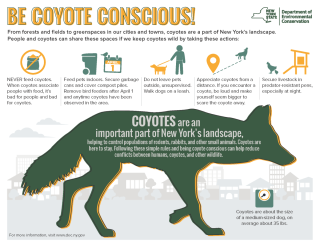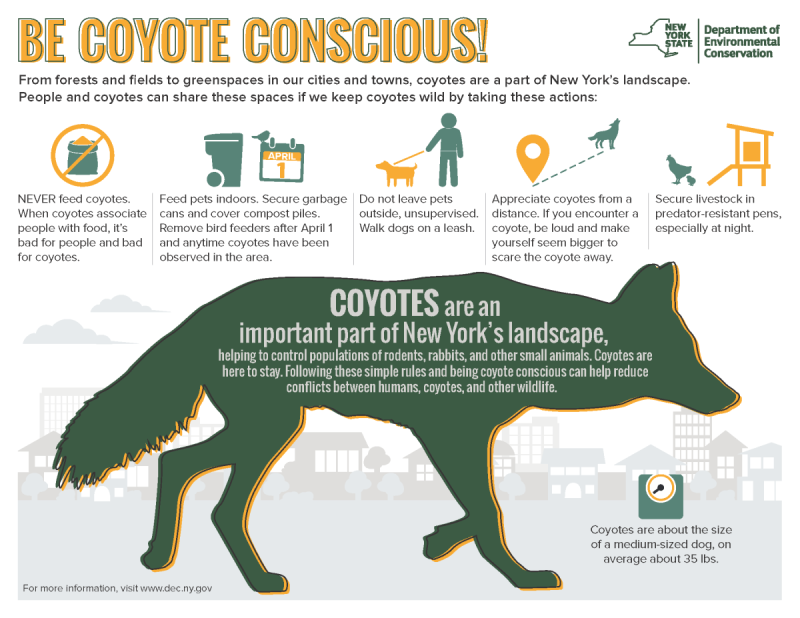Coexisting With Coyotes: Resources to Avoid Wildlife Conflicts

January through March is coyote mating season in New York State. During this time of year, coyotes tend to be more active, meaning that there is an increased likelihood of seeing coyotes in our area. Please read the following guidance regarding human / coyote contact from the NYS Department of Environmental Conservation. Additional info on reducing conflicts with coyotes can be found here: https://www.dec.ny.gov/animals/6971.html.
Coyotes can be found in habitats throughout the state, from rural farmland and forests to green spaces in suburban and urban areas. For the most part, coyotes avoid contact with people. If coyotes learn to associate food sources such as garbage or pet food with people, these animals may lose their natural fear of humans, increasing the potential for close encounters or conflicts.
To reduce the likelihood of conflicts with coyotes, New Yorkers are encouraged to take the following steps:
- Do not feed coyotes.
- Do not leave food outside. Pet food and garbage attract coyotes and other wildlife and increase risks to people and pets:
- Do not feed pets outside;
- Prevent access to garbage;
- Fence or enclose compost piles; and
- Eliminate availability of bird seed. Concentrations of birds and rodents that come to feeders can attract coyotes.
- Do not allow coyotes to approach people or pets. If you see a coyote, be aggressive in your behavior: stand tall and hold your arms up or out to look as large as possible. If a coyote lingers for too long, make loud noises, wave arms, and throw sticks and stones.
- Teach children to appreciate coyotes from a distance.
- Do not allow pets to run free. Supervise outdoor pets to keep them safe from coyotes and other wildlife, especially at sunset and at night. Small dogs and cats are especially vulnerable.
- Fence yards to deter coyotes. The fence should be more than four feet tall, and tight to the ground, preferably extending six inches below ground level.
- Remove brush and tall grass from around homes to reduce protective cover for coyotes. Coyotes are typically secretive and like areas where they can hide.
- Ask neighbors to follow these steps to prevent coyote conflicts.
During this time of year, coyotes tend to be more active and may be more visible and simply seeing a coyote occasionally is not a cause for concern. However, if coyotes exhibit bold behaviors and fail to exhibit fear of people, or if seen repeatedly during the day near residences, the public is advised to contact the Regional DEC Wildlife Office for assistance. In emergency situations, contact the local police department.


